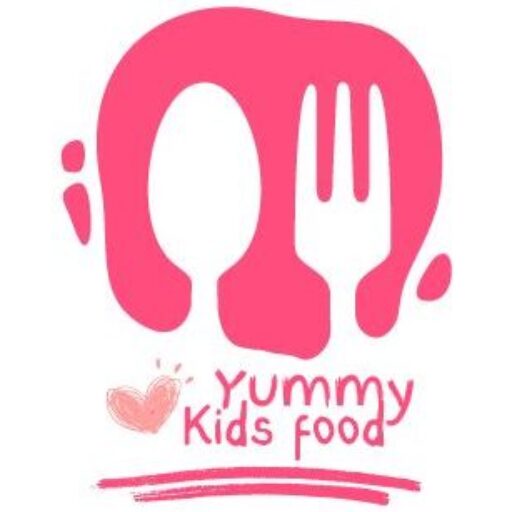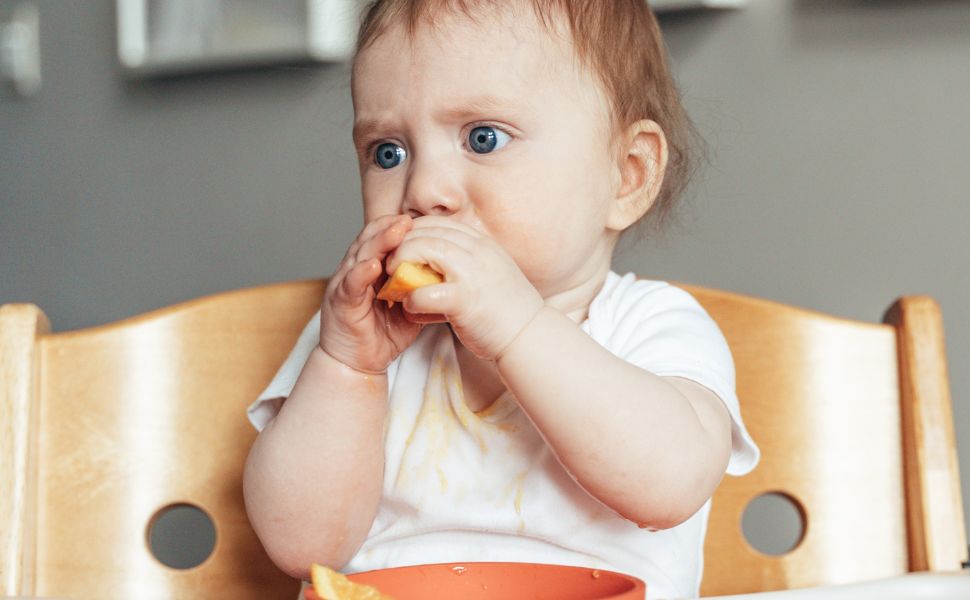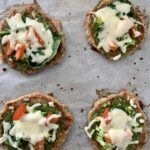BLW signs of readiness is very important to know before starting BLW method of introducing solids to baby. Do note that World Health Organisation (WHO) & other health authorities around the world recommend waiting until baby is around 6 months old before introducing solid foods.
Table of Contents

BLW Signs of Readiness
Baby Led Weaning (BLW) is a feeding method that encourages babies to self-feed from the start of their weaning journey. With BLW, babies are introduced to solid foods at around 6 months of age and are allowed to explore and experiment with food at their own pace, while still receiving breast milk or formula as their main source of nutrition. However, before starting BLW, it’s important to ensure that your baby is ready for this type of feeding. Here are some signs of readiness to look out for:
- Ability to sit upright: Your baby needs to be able to sit up unsupported, with their head and neck in a stable position, to be able to feed themselves effectively. This ensures that food doesn’t get stuck in their airways, reducing the risk of choking.
- Good hand-eye coordination: Your baby needs to be able to reach for food, pick it up, and bring it to their mouth. Good hand-eye coordination is essential for this, and your baby should be able to grasp objects with their thumb and forefinger (the pincer grasp).
- Loss of tongue-thrust reflex: The tongue-thrust reflex is a natural reflex that babies are born with, which makes them push food out of their mouths with their tongues. This reflex usually disappears around 6 months of age, which is a sign that your baby is ready to start solid foods.
- Interest in food: Your baby should show an interest in food and be eager to explore new tastes and textures. They may start reaching for food on your plate, or showing signs of excitement when they see you eating.
- Able to chew: Your baby needs to be able to chew food before swallowing it. This doesn’t mean that they need to have teeth, as babies can chew with their gums. However, they should be able to move food around in their mouth and swallow it safely.
It’s important to remember that all babies develop at their own pace, and some may be ready for solid foods earlier or later than others. If you’re unsure whether your baby is ready for BLW, consult your healthcare provider for guidance. Once you’re confident that your baby is ready, start by offering soft, easy-to-hold finger foods such as steamed vegetables or ripe fruit, and always supervise your baby during meal times and to introduce new foods gradually to prevent choking or food allergies. With patience and persistence, you and your baby can enjoy the benefits of baby led weaning and the joy of exploring new foods together.
Related: Check out the best high chair for blw
BLW Recipes that are loved by Baby
It is important to introduce one food at a time to check for any allergic reactions or digestion issues especially when you are just starting solids for baby. Here are a few baby led weaning recipes that you can try appropriate with their age:
Baby led weaning Stage 1 (6 months)
Here are a few baby led weaning recipes typically to start with 6 month old:
1. BLW Banana – One popular food to offer is BLW banana, due to its soft texture and natural sweetness. Make sure to cut the bananas to appropriate size that are easy to hold and are not potential choking hazard.
2. Blw Avocado – One of the first foods that you can introduce to baby with baby led weaning is avocados which are healthy and easy to hold for baby. Make sure the avocado is fully ripened to avoid potential choking.
3. Blw Sweet potato – This is my favorite and babies enjoy eating sweet potatoes.
4. Blw Zucchini – Zucchini is the best way to introduce a healthy and versatile vegetable that can be easily incorporated into your baby’s diet during the baby-led weaning process.
5. Blw Carrots – Introducing carrots is the easy way to start baby led weaning.
6. Scrambled egg – Blw scrambled eggs are one of the best meal ideas to introduce to your baby.
7. French toast – Easy and healthy breakfast to introduce to baby.
Baby led weaning Stage 2 (7-8 months)
1. Pancakes – Pancakes make a great baby led weaning food to introduce for babies. With just 3 ingredients and added fruit makes it naturally sweet to enjoy for baby. You can try the below pancake options:
2. Avocado Flat bread – A healthy flatbread using avocado and whole wheat flour makes a great meal for baby to enjoy.
Baby led weaning Stage 3 (9-12 months)
1. Cauliflower nuggets – An easy and healthy meal option with added nutrition and vegetables to introduce to babies.
2. Quesadilla – My kids love this recipe. And my little one started enjoying this recipe since she was almost 10months.
3. Pesto pizza – An easy and versatile pizza recipe enjoyed by babies and toddlers.
4. Pasta – Check out 9 easy and healthy pasta recipes that can be enjoyed by babies.
FAQs – Blw readiness signs
What are signs your baby is ready for BLW?
Baby Led Weaning (BLW) is a method of introducing solid foods to your baby by allowing them to self-feed with finger foods rather than spoon-feeding purees. Here are some signs of readiness for blw that your baby may be ready for BLW:
- Good head and neck control: Your baby needs to be able to hold their head up and sit upright with support to safely eat finger foods.
- Interest in food: If your baby watches you eat or reaches for your food, they may be ready to start exploring food on their own.
- Ability to grasp objects: Your baby should be able to pick up and hold onto small pieces of food with their fingers and bring them to their mouth.
- Loss of the tongue-thrust reflex: Babies have a natural reflex to push food out of their mouth with their tongue, which typically disappears between 4-6 months of age.
- Increased appetite: If your baby seems hungry after a feeding and is showing interest in food, it may be time to introduce solid foods.
- 6 months of age: According to the American Academy of Pediatrics, babies should be exclusively breastfed or formula-fed for the first 6 months of life, and then can start solid foods.
It’s important to remember that every baby is different and may develop at their own pace, so it’s important to talk with your pediatrician about the best timing to start baby led weaning.

What are 3 clear signs an infant is ready for weaning?
Weaning is the process of introducing solid foods to a baby’s diet while gradually reducing their reliance on breast milk or formula. Here are three blw readiness signs that indicate an infant is ready for weaning:
- Age: Infants are typically ready to start weaning between four and six months of age, but this can vary from child to child. Before starting the weaning process, it is important to consult with a pediatrician to ensure your baby is developmentally ready for solid foods.
- Increased appetite: If your baby seems to be consistently hungry even after feedings of breast milk or formula, it may be a sign that they are ready for solid foods. They may also start waking up during the night for additional feedings or appear unsatisfied after their regular feedings.
- Ability to sit up and control head and neck: When starting the weaning process, babies should be able to sit up on their own and control their head and neck movements to avoid choking or gagging while eating. Additionally, babies should be able to move food around in their mouth and swallow it without difficulty.
What is the BLW finger rule?
The Baby Led Weaning (BLW) finger rule is a guideline to help parents and caregivers determine the appropriate size and texture of food to offer to infants who are practicing self-feeding:
- The food should be about the size and shape of an adult finger, making it easy for the baby to grasp and hold with their hands.
- The food should be soft enough to be squished between the fingers, so the baby can easily break it down with their gums and teeth if they have started to develop them.
- The food should be large enough to prevent the baby from choking, but small enough that they can easily manage it in their mouths and control it while chewing and swallowing.
The BLW finger rule helps ensure that infants can safely explore and enjoy a wide variety of foods while learning to feed themselves. It is important to always supervise babies during mealtimes to prevent choking and other potential hazards.
What is the 4 day rule for baby led weaning?
The 4-day rule is a guideline for parents who are introducing solid foods to their baby’s diet through baby-led weaning. The rule recommends offering a new food to the baby for four consecutive days to observe any possible allergic reactions or digestive issues before introducing another new food. Here are the steps to follow:
- Choose a single food: Start by selecting a single food item to offer your baby. This can be a fruit, vegetable, or protein source.
- Offer the food for four consecutive days: Offer the selected food to your baby for four consecutive days, either at mealtime or as a snack.
- Watch for signs of allergic reactions: Observe your baby for any signs of allergic reactions, such as rash, hives, swelling, or difficulty breathing. If any of these symptoms occur, stop offering the food immediately and consult a pediatrician.
- Introduce a new food: If your baby does not show any signs of an allergic reaction or digestive issues, you can introduce another food and repeat the same process.
By following the 4-day rule, parents can help identify potential food allergies or intolerance while gradually introducing a variety of healthy foods to their baby’s diet.

What happens if I feed my baby solids too early?
Introducing solid foods too early can have negative effects on your baby’s health and development. Here are some potential consequences of feeding your baby solids too early:
- Digestive problems: A baby’s digestive system is not fully developed until around 4-6 months of age. Introducing solid foods too early can cause digestive problems such as constipation, diarrhea, and upset stomach.
- Allergic reactions: Babies who are introduced to solid foods before their immune system is fully developed are at a higher risk of developing food allergies.
- Choking hazards: Babies who are fed solid foods before they are developmentally ready may not have the skills to safely swallow and could be at risk of choking.
- Malnutrition: Solid foods do not provide the same nutritional value as breast milk or formula, which are essential for a baby’s growth and development. Introducing solid foods too early can result in malnutrition.
- Decreased milk intake: Offering solid foods too early may cause a baby to eat less milk than they need, which can result in inadequate nutrition.
It is recommended that parents wait until their baby is around 6 months old before introducing solid foods. Before making any changes to your baby’s diet, it is important to consult with a pediatrician.
How many times a day should I feed solids to my 6 month old?
At 6 months old, most babies are ready to start eating solid foods alongside their regular milk feedings. Here’s a general guideline for how often to feed solids to a 6-month-old:
- Start with small amounts: Begin by offering a small amount of solid food, such as a few spoonfuls, once a day.
- Increase gradually: As your baby gets used to eating solid foods, you can gradually increase the frequency to 2-3 times per day.
- Offer a variety of foods: Introduce a variety of foods, including fruits, vegetables, grains, and proteins, to ensure your baby gets a balanced diet.
- Follow your baby’s cues: Follow your baby’s cues for hunger and fullness. Let them eat as much or as little as they want, and don’t force them to eat if they’re not interested.
- Continue milk feedings: Remember that breast milk or formula should still be the primary source of nutrition for your baby at this age. Offer milk feedings before offering solid foods.
As always, it is important to consult with your pediatrician to make sure your baby is developing normally and to get advice on the best feeding schedule for your individual baby.














2 thoughts on “BLW signs of readiness – Everything you need to know!”